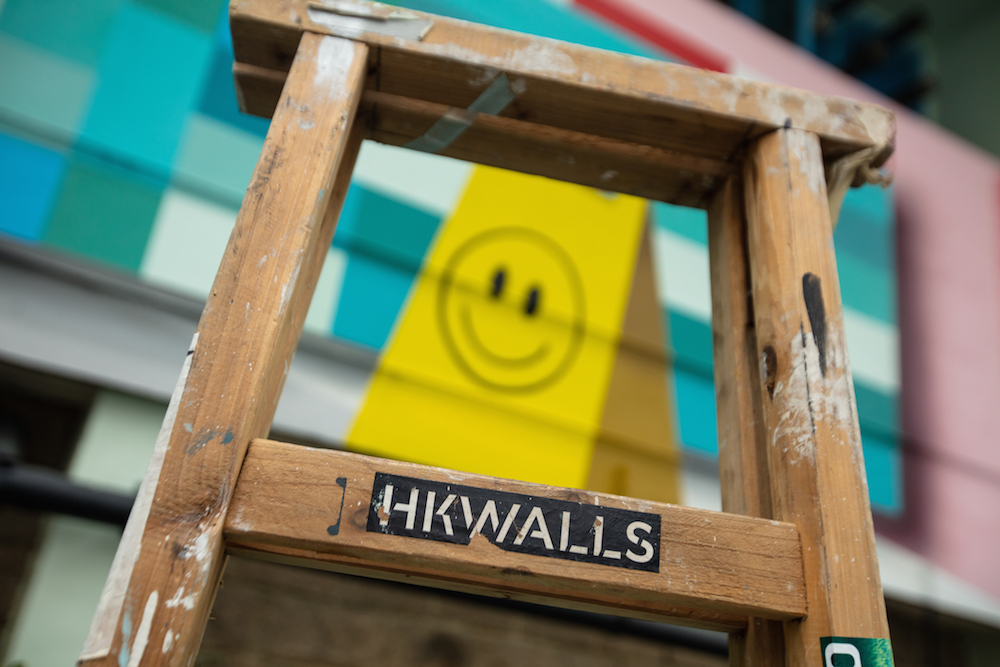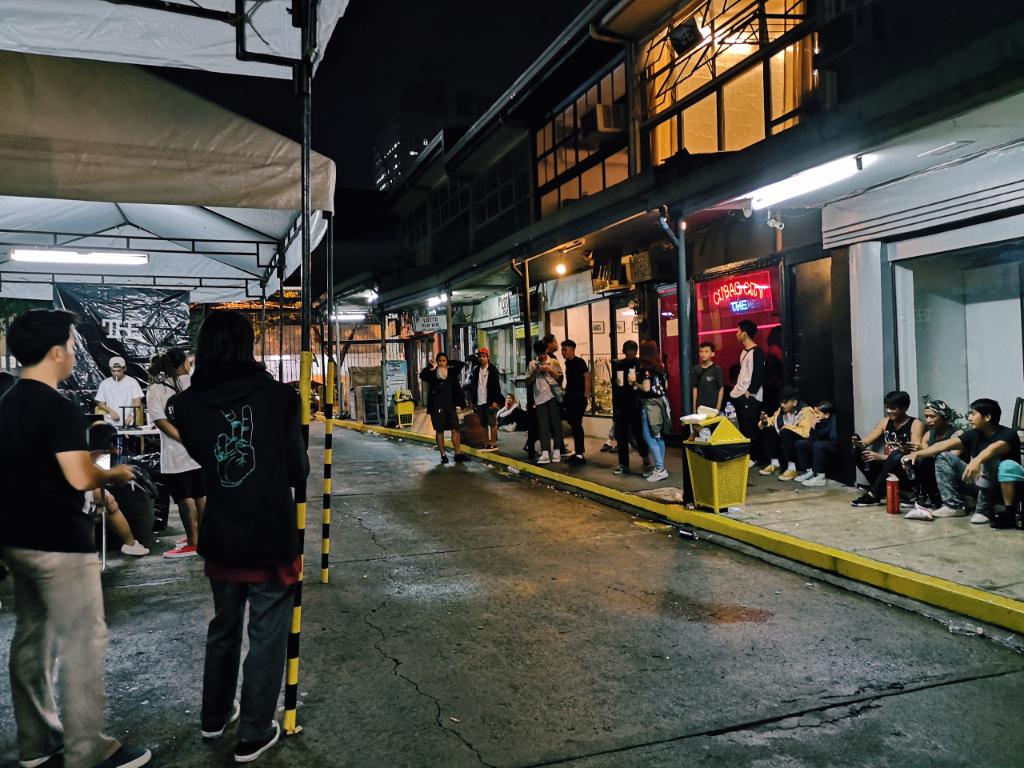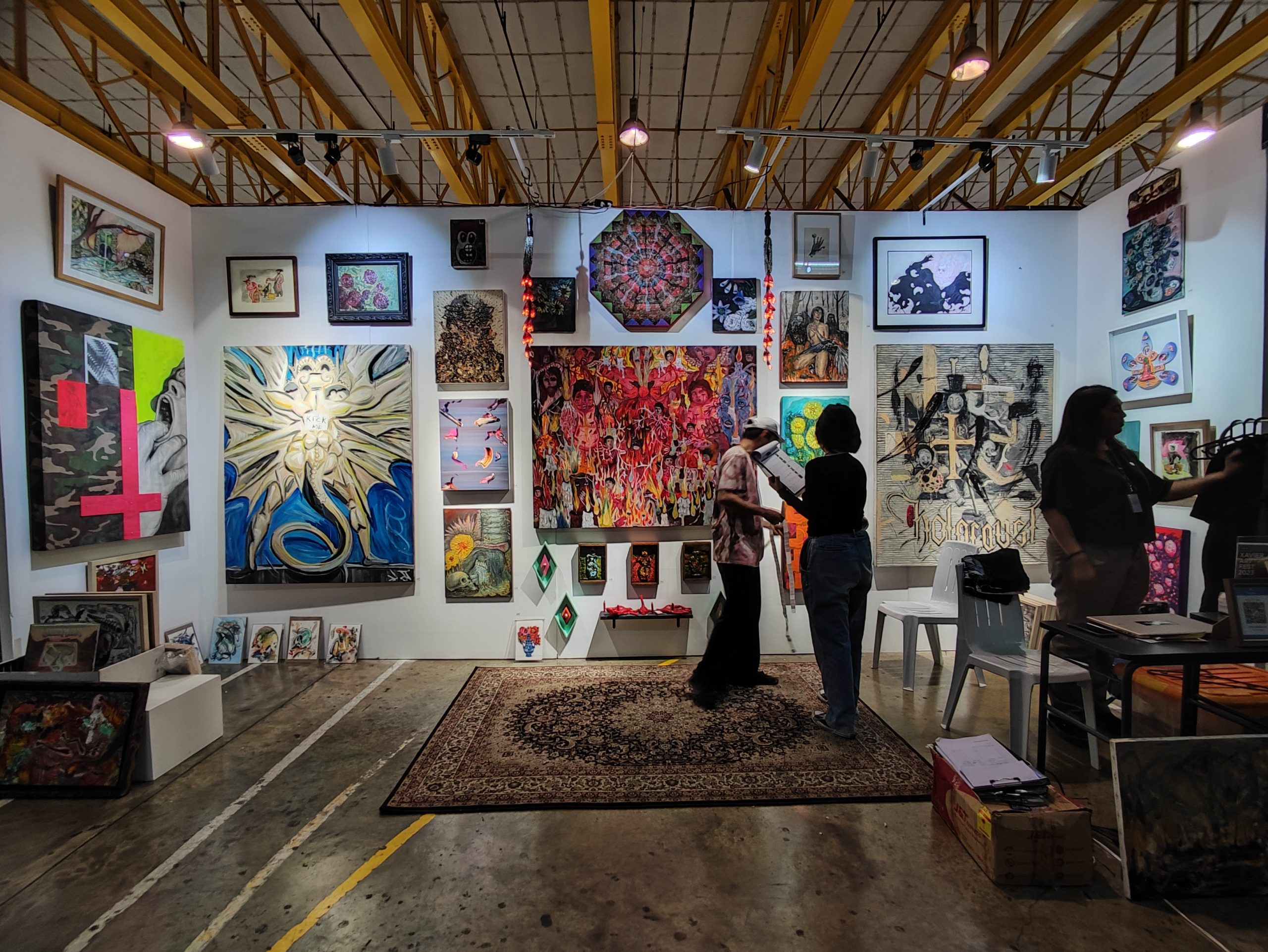
Empty, matte black figures suspended above dust piles in a small, windowless room and a dry faucet on the far end. It’s a bleak scene, one loaded with implications for our future if the world continues on its path. The installation is Dennis Bato‘s “Element Of The Past” show at Vinyl on Vinyl, which opened this week. And although meaning behind this piece of concept art is unclear at first glance, all it takes is a nudging from the artist himself to send its possibilities spiraling. He says it’s about the existence humans might face from the choices we’ve made, specifically the specter of water crises, which Manila only recently suffered through as millions of people faced limited access to water.

It’s not much to look at—just some blank articles of clothing hung in an awkward space of a room—but the conversations the piece raises couldn’t be more important.
The suspended resin sculptures might depict our lasting footprint, one that’s permanent with or without us—and likely without us, as suggested by the dirt piles collected below each.
Is fast fashion to blame? Or just a preoccupation with self-image and celebrity? It doesn’t even matter, other than the general implication that our overall culture is unsustainable and could result in our disappearance. The stats definitely back it up, with one recent study finding that it would take 1.7 Earths to sustain our current level of consumption.

The faucet is much more literal and direct, referencing our very immediate experience of water interruptions and shortages. Ostensibly caused by the seasonal El Niño weather pattern, amplified by climate change and population growth, it was a crisis that was largely manmade. According to the Star, Angat Dam, Metro Manila’s main source of “potable” water, reached a critical level not because of drought, but because of mismanagement. Half the water going to Manila gets lost or stolen before getting here, illegal logging has made filling and maintaining the dam more difficult, and improper transfers have contributed to lower water levels and flooding in nearby towns. Meanwhile, the city’s most likely source of additional water, the Kaliwa Dam, has been challenged as unreasonably expensive and damaging compared to alternative sources. Despite the dire consequences of all this, it wasn’t on the front page of newspapers day after day, going viral on the web, or at the forefront of any protests.
Bato broaches some welcome discussion, one we jump at the opportunity to join. But all this is buried in the obscure language of conceptual art, hidden from most gallery-goers. It’s possible that some blatant graffiti, a genre Bato is intimately familiar with, would have more directly challenged and engaged viewers.




